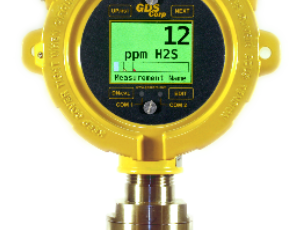Hydrogen sulfide is a colorless, poisonous, and corrosive gas with high flammability and a rotten egg odor. It is found in natural gas and crude petroleum and is the natural result of broken-down animal or human wastes and other organic matter. Exposure to this gas causes a wide arrange of symptoms in people, depending on the concentration, measured in parts per million, or ppm, and the length of time it is inhaled. This is why a hydrogen sulfide gas detector is a vital piece of workplace monitoring equipment. The acute effects of exposure are explained below.
0.00011 to 0.00033 ppm
This is a typical background concentration of the gas and does not cause harm.
0.01 to 1.5 ppm
At this level, some people will notice a rotten egg odor, which becomes stronger at 3 to 5 ppm. Once the exposure threshold reaches 30 ppm, the smell becomes very sweet and sickening.
2 to 5 ppm
Prolonged exposure at this level will result in headaches, watery eyes, nausea and sleep problems. Those with asthma will experience airway constriction.
20 ppm
Severe headaches, dizziness, memory loss, irritability and fatigue occur at 20 ppm exposure.
50 to 100 ppm
When hydrogen sulfide gas becomes this concentrated, it will cause lung and eye irritation after one hour of exposure. There may also be a loss of appetite along with an upset stomach.
100 ppm
After two to 15 minutes of exposure, eye irritation, coughing and a complete loss of smell will occur. This is followed by tiredness and changed breathing with extended exposure. Symptoms will continue to worsen, and death may occur within 48 hours.
100 to 150 ppm
This level results in a complete loss of smell. This is very dangerous as it leaves a person with no way to judge the severity of the gas concentration.
200 to 300 ppm
One hour of this exposure will bring marked breathing problems and eye irritation. The lungs will start filling with fluid if the exposure is prolonged.
500 to 700 ppm
A person will stagger, collapse and die within one hour.
700 to 1000 ppm
This level will cause a person to collapse and die within a few minutes.
1,000 to 2,000 ppm
It is not possible to survive a concentration of hydrogen sulfide gas at this level. Death will occur almost instantly.
A hydrogen sulfide gas detector will save lives and prevent possible long-term health effects from exposure such as motor function problems, memory gaps, chronic headaches and attention-deficit issues.

